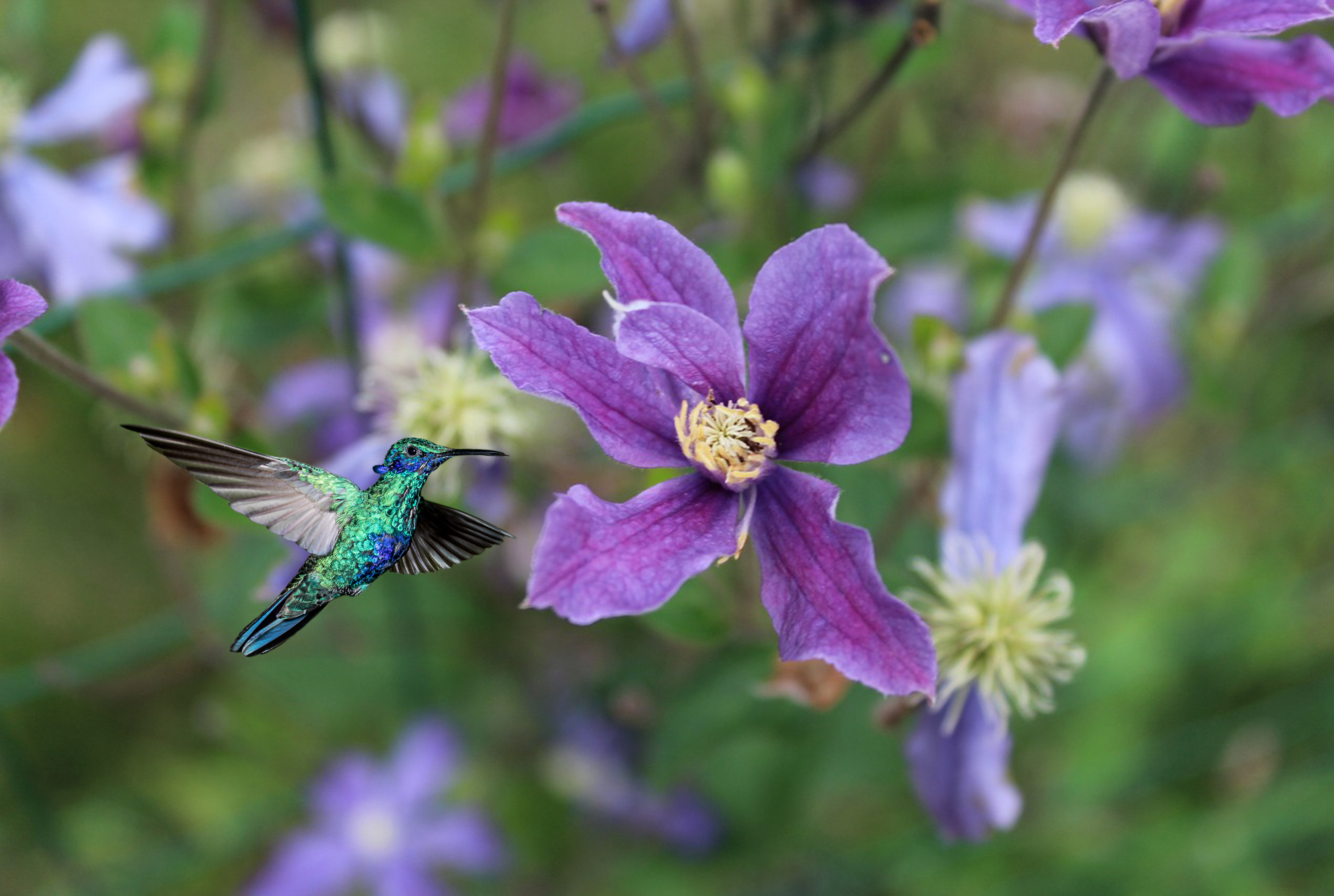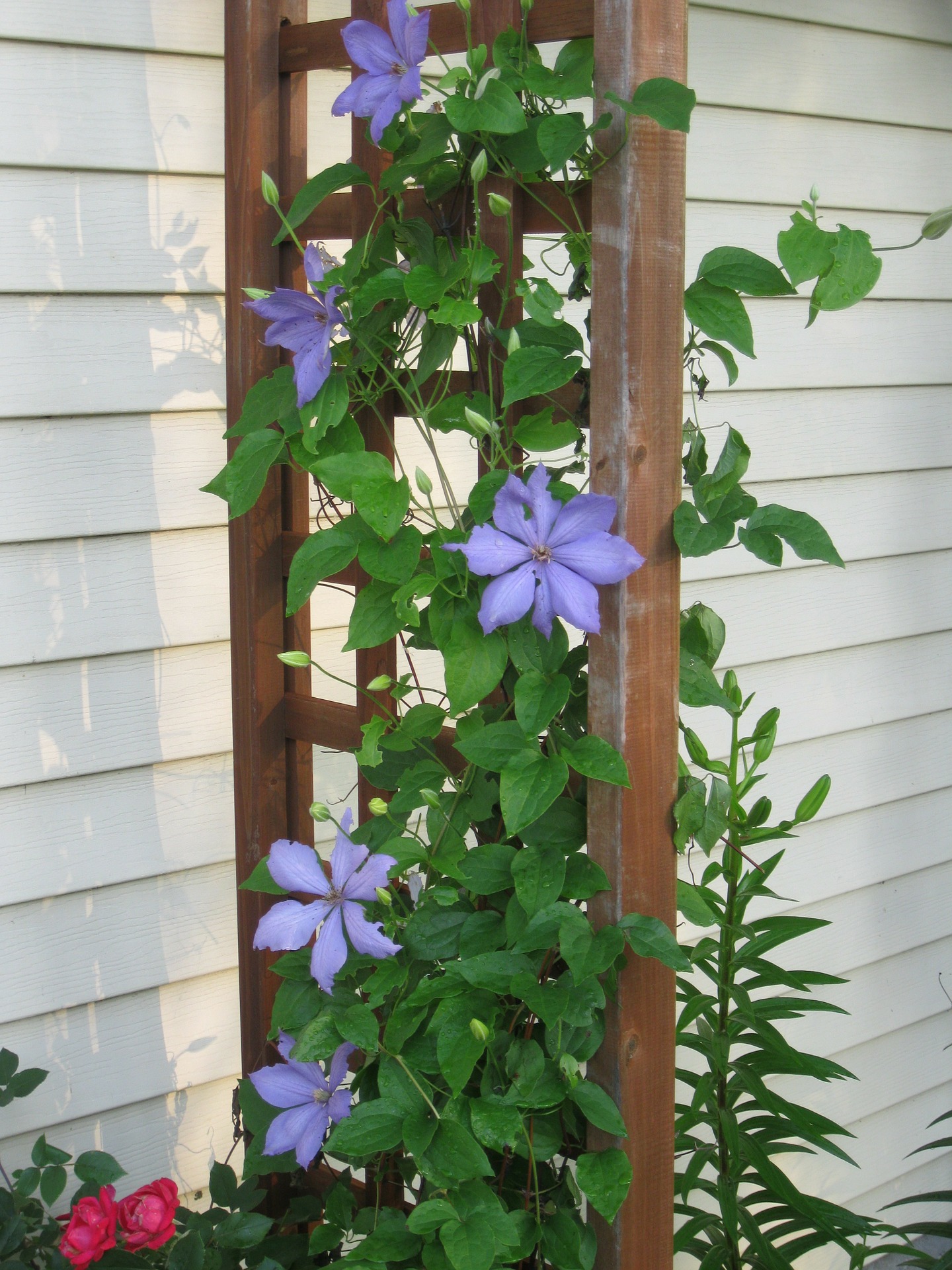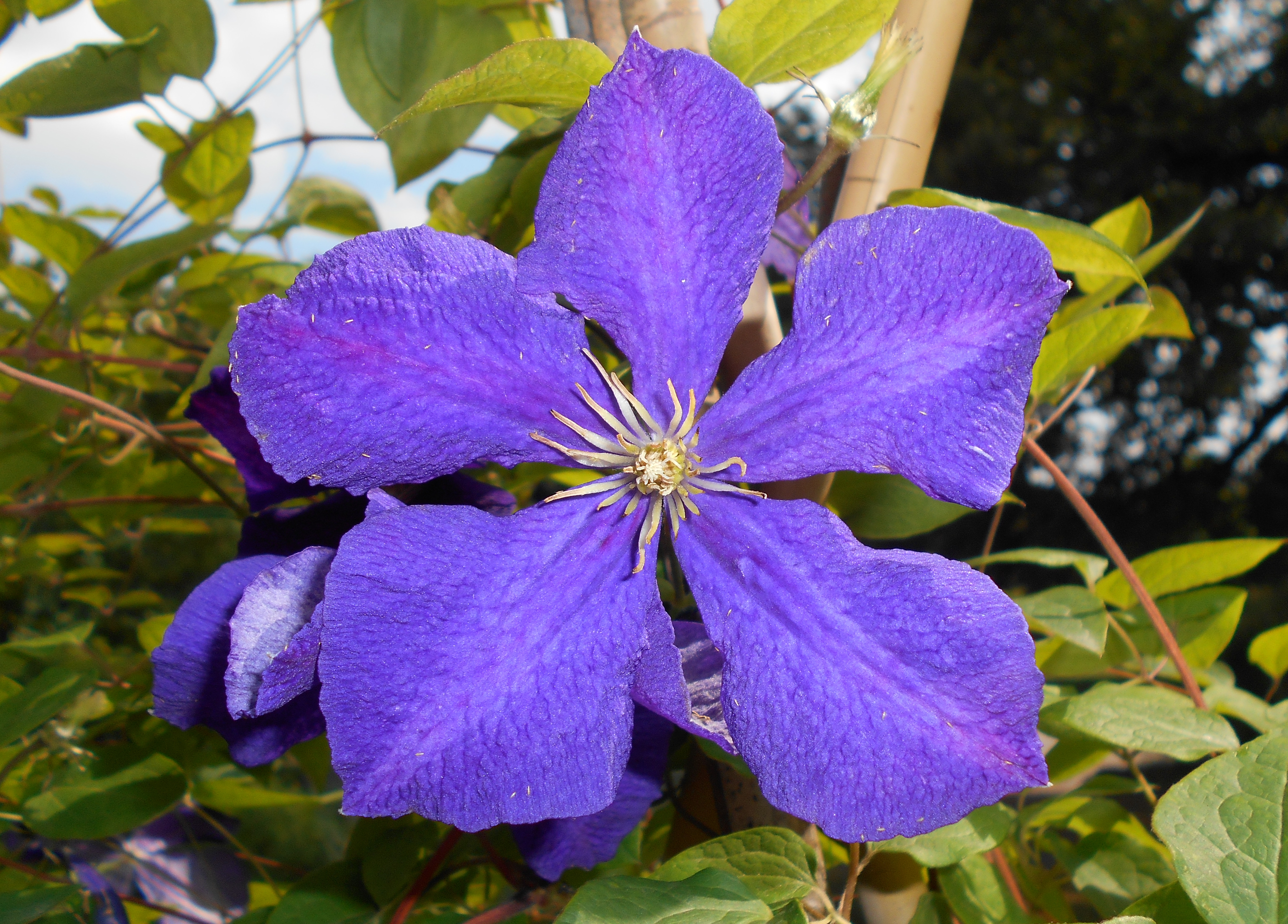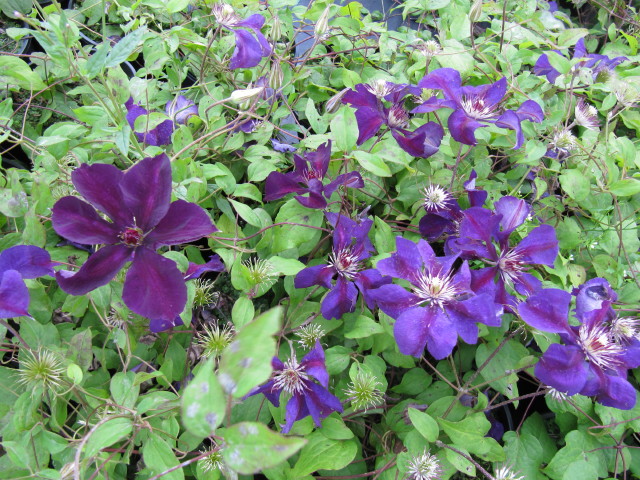I went to the garden center today to get two 4 inch pots and a couple of succulents to fill them. I walked out with three new clematis varieties, two trellises, a hummingbird feeder and absolutely no pots or succulents.Since I already have five gorgeous clematis on my fence, adding more almost seems an extravagance, but to fellow clematis lovers, it makes perfect sense.

The truth is clematis, nicknamed Queen of the Vines, adds to the garden in ways that few other perennials can. Not only do they offer magnificent blooms in a range of colors and sizes throughout the summer season, but once established clematis vines simply become more beautiful each year. They are favorites of hummingbirds and many add a light fragrance to the air. They have few pests and some varieties are fairly resistant to foraging deer. They can add charm to what could be a dreary view.

Although most people are familiar with a few of the “old favorites” of Jackmani, Henryi and Comtesse de Bouchard, there are actually over 300 species and hybrids in the clematis family. With such a huge variety, there are clematis available to suit almost every taste and situation. Many varieties impressively climb to 10 or even 20 feet in a season, but some are small enough to be easily grown in pots on a patio.
The average clematis bloom has 6 or 7 petals and measures 5 or 6 inches across. Some diminutive ones however, measure less than an inch in diameter. Most are single petaled, but some varieties flaunt double blossoms. There are even several species with bell-shaped flowers. Colors run the gamut from pure white to burgundy, from the lightest lavender to the deepest purple, pinks, yellows, stripped and even bordered.

Clematis vines have the undeserved reputation of being finicky and difficult to grow. Although they do have some strong preferences, following a few planting and care guidelines can almost always guarantee success. First of all, make sure that the variety you select is recommended for your area. Most clematis are hardy in zones 4 through 9; some varieties are hardy to zone 3. Those planted in zone 3, even if recommended for the zone, may need additional winter protection. Check with the extension service or a local garden center for specific information.

Choose and prepare your planting location carefully. The vast majority of clematis varieties prefer full sun (at least 6 hours per day) for their vines and shade for their roots. They need moist but well-drained soil that is neutral to slightly alkaline. (Folklore encourages liming the soil every year. We now know that an annual addition of lime can lead to other nutritional problems and should be avoided.) Fertilize once in the spring with an all purpose fertilizer. You can also use a water-soluble fertilizer once orr perhaps twice during the growing season for an additional boost, but be careful not to over-fertilize.

To plant, dig a hole that is at least twice the size of the clematis’s pot — both width and depth. Work in organic matter which will help in promoting substantial root development. Unlike many perennials, clematis should be planted deep in the hole. The crown of the plant needs to sit about 2 inches below the ground surface and the first set of leaves should sit just under the surface. Take extreme care not to break the roots, crown or vines as you place the plant.

Water thoroughly at planting to remove any air bubbles and then weekly throughout the first year. Clematis like their roots to be kept cool; either apply a layer of 4 to 6 inches of mulch around the plant or, even more fun, use a low growing perennial groundcover as a companion plant. If you mulch, make sure that the mulch does not touch the plant itself as it will rot the stems.

Because the majority of clematis are climbers (there are some bush varieties), they need a support system on which to climb. In fact, without support clematis will stop growing. The tendrils that grasp are short and somewhat delicate so make sure that the treillis is less than ½ inch in diameter. Adding fishing line, twine or even netting to your trellis will encourage upward growth.

Proper pruning seems to be the point of confusion for those new to clematis growing. Part of the reason for the bewilderment is the fact that different species have different pruning needs. Some varieties flower on old growth, some on new growth and some on both. I have found it most effective to leave old growth in place in the early spring. Then I prune out dead branches when it is apparent that they are not leafing out at all. Some experts advise cutting young clematis back to 12 inches in the spring following their planting. This encourages bushy plants.

Clematis tend to be healthy plants, plagued by few diseases. Wilt seems to be the most common and is easily treated by cutting out and physically removing the diseased portion of the affected stems. Cut to at least 2 inches below the wilt. Keep any infected foliage from remaining on the ground. Wilt, although unsightly, won’t kill the plant.

As I sit and write this article, my gaze keeps drifting outside to the wall of clematis just beginning to bloom. I know that they will give me the gifts of vibrant color, sweet smells and visiting hummingbirds not only this summer but also many more summers to come. Add them to your garden; you won’t be disappointed.
Clematis varieties to look for:

Guernsey Cream
Abundant flowers beginning as pale yellow and fading to creamy white; silver seedheads follow. Early bloomer
Gypsy Queen
Blooms begin as dark red and change to deep purple. Excellent for arbors. Midsummer bloomers.

Hagley Hybrid
Pink blooms from early summer to early fall. Great for containers.

Virgin’s Bower
Clusters of small, white fragrant blooms beginning in late summer and continuing through the fall





